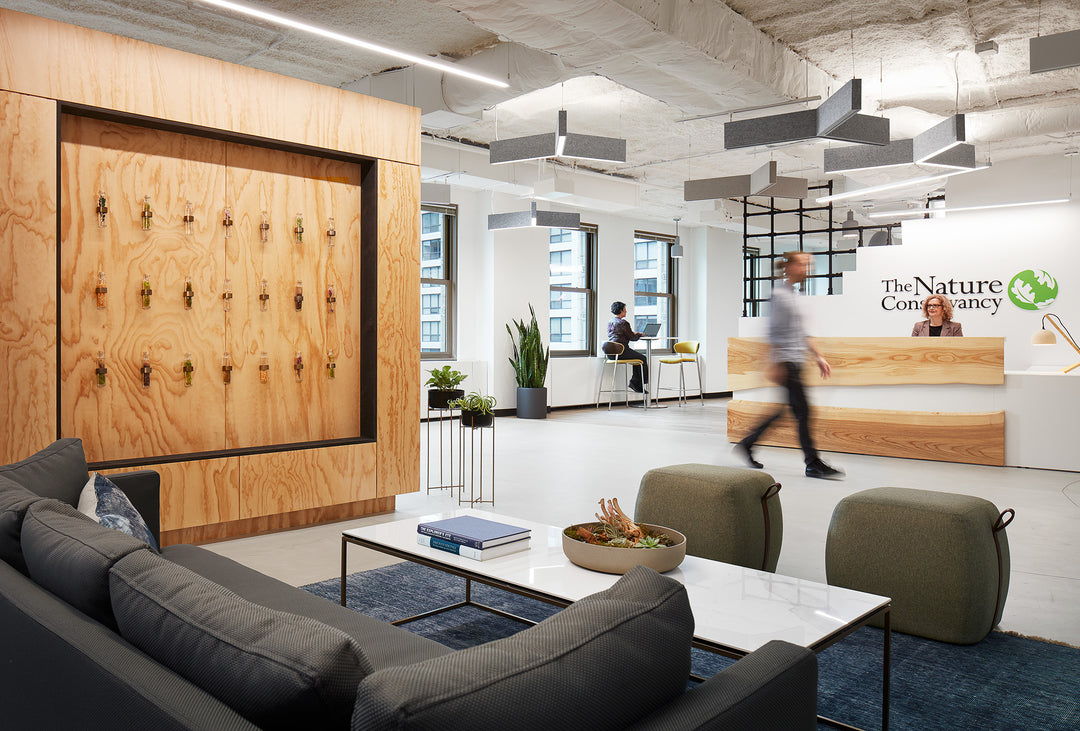Lighting, Sound, Air: Non-Traditional Office Ergonomics
What’s the first thing that comes to mind when you hear “workplace ergonomics”? Probably something related to comfy desk chairs and workstations, right? While most people are familiar with traditional workplace ergonomics, it’s important not to forget about the softer side of ergonomics, which includes air, sound and lighting. Read on to learn why employers should take a more holistic view when designing an ergonomic office.
How does lighting affect workplace ergonomics?
Ergonomic lighting is the relationship between the light source and the individual. The main takeaway for proper ergonomic lighting in an office is to avoid anything that results in eye strain. Undue strain on the eyes will result in headaches over time, so use light diffusers to eliminate glares caused by bright lights. Harsh lighting can also wash out images on computer screens, causing employees to strain their eyes. When considering computer lighting ergonomics, you must make sure everyone has ergonomic task lighting that can be adjusted for their own personal lighting needs. Although natural lighting is wonderful, it can contribute to glare, so use blinds on windows to filter bright light. Interested in learning more about ergonomic lighting in the workplace? Check out our selection ergonomic office furniture.
How do I maintain proper air quality in an office?
According to the EPA, the majority of Americans spend up to 90% of their time indoors. Most of this is spent inside an office, though indoor environments can have levels of pollutants that are actually higher than outside levels. Fortunately, you can control this with a few simple maintenance tasks. The humidity of your building should be set according to the season (higher in the winter months and lower in the summer but always right around 30%). Have the HVAC system serviced regularly; HVAC filters can be a breeding ground for various contaminants, so make sure they’re changed monthly to reduce pollution. Vents and air grills should be free of blockage to allow for proper air circulation. Keep the inside air temperature around 73 degrees so that employees are comfortable. All food should be stored in airtight containers to avoid unpleasant smells, and don’t forget to do a refrigerator clean out at the end of every week. Adding greenery such as spider plants, English ivy, and peace lilies will promote healthy air quality. These plants are also low maintenance and bring the outdoors to the indoors – a win-win for office environments.
How do I ensure proper sound quality at the office?
Did you know that a bit of noise can actually promote concentration and avoid distractions? The majority of offices are around 40-60 dB, and background noises should be no more than 10 dB to maintain optimal alertness for employees. Your office should be a relatively peaceful place with comfortable levels of noise. Making sure there’s a separate room for personal conversations and conference calls is important. If a separate room isn’t possible, designating specific parts of the office as “quiet zones” can help. Move loud office equipment into separate rooms and use sound absorbing dividers and carpeting to reduce the overall hum in your workspace.
Lighting, sound, and air quality are just a few pieces of the ergonomics puzzle for office layouts. A few small ergonomic tweaks can have a huge impact on employees’ productivity and happiness. Rework’s team of talented designers are well versed in workplace ergonomics – reach out to schedule a complimentary design session if you’re looking to make ergonomic improvements throughout your office.
For more information on non-traditional ergonomics, please see our recent infographic on the topic. For more information on office furniture, industry trends, and to stay in touch, please follow Rework on Twitter and LinkedIn.




